Thu Jul 23 2020 · 11 min read
Armenia’s New National Security Strategy: Sharing First Impressions

By Vahram Ter-Matevosyan
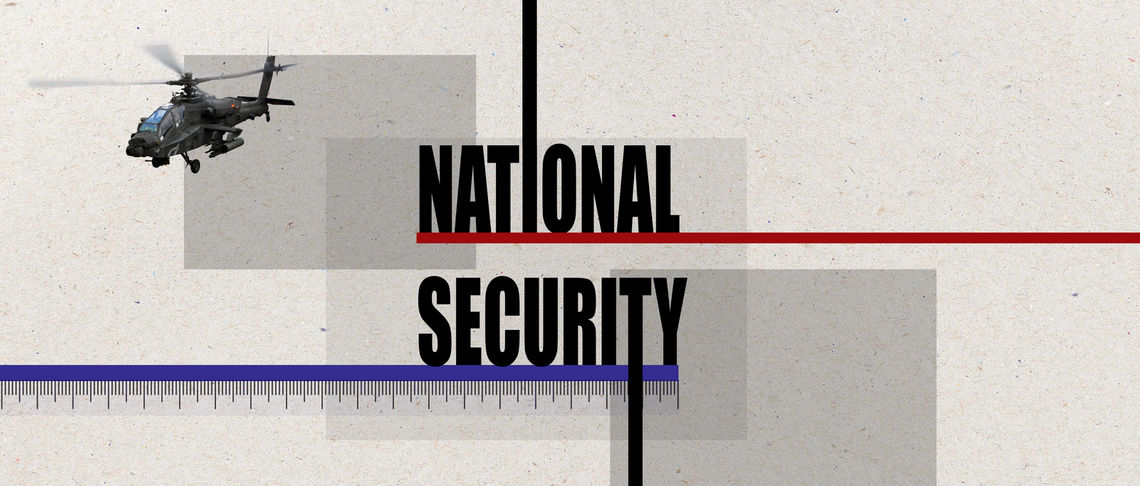
The Context
After a 13-year hiatus, Armenia’s Security Council (SC) introduced a new National Security Strategy (NS Strategy) on July 10, 2020. The previous edition, adopted in February 2007, just one year before the end of Armenia’s second President Robert Kocharyan’s tenure, aimed at building synergy between Armenia’s defense and foreign policy areas. It was also Armenia’s first unclassified document to conceptualize domestic and external security environments, set out interests and establish objectives through listing the key threats to those interests. It was the result of concerted efforts by various stakeholders in Armenia and abroad, and was spearheaded by the Institute of National Strategic Studies at Armenia’s Ministry of Defense (MoD).
Since its promulgation in 2007, a lot has changed both in Armenia and the world. Following its adoption, many experts and practitioners alike were urging the government to renew and revise the document on a periodic basis, in sync with the practice of other democratic countries. In Armenia, however, domestic and external political considerations, national priorities and interests favored a different course of action.
Armenia’s National Security Council (NSC), established in 1991, played a central role in developing and strengthening national security over the past three decades. Each of Armenia’s four leaders, depending on their personality and management styles, has adopted varying approaches on how to utilize the NSC in their policymaking process. Between 1992 and 1994, it was instrumental in securing a favorable outcome in the Nagorno-Karabakh War. Between 1994 and 2008, the role of the NSC as an institution declined, with a few exceptions, for example, the fateful meeting of the NSC in January 1998, when Armenia’s first President Levon Ter-Petrosyan was confronted by the Prime Minister, Minister of Defence, and Minister of National Security and Internal affairs. The disagreement between them and Ter-Petrosyan over the Karabakh conflict resolution proposal led to the resignation of the first president a month later. The legacy of the NSC’s activities between 2008 and 2018 is two-fold. Since 2008, Armenia’s third President Serzh Sargsyan, being a long-time Secretary of the NSC and having played a leading role in the adoption of the 2007 NS Strategy, considered the National Security Council his bailiwick. He cherished high hopes that resources allocated to reforming the NSC as an institution would solidify its role and enhance its visibility in the national security policy planning process. Almost all the technical conditions were present for the NSC to enhance its institutional efficiency: a new building was built just meters away from the President’s Office, while its staff was expanded to monitor the volume of challenges Armenia confronted. The NSC’s role as an advisory body was indeed gradually changing as it held regular meetings to discuss important foreign and domestic political issues. One could observe a deliberate policy to make the NSC an important constitutional body (Article 55.6 of the 2005 Constitution) where different strategic options were examined, chosen and implemented. On the other hand, the political appointment of Artur Baghdasaryan, the Head of the Country of Law Party, as Secretary of the National Security Council in 2008 was not consistent with Sargsyan’s declared priorities. Baghdasaryan had slightly divergent plans for the position. The NSC office became an overly-politicized institution as it was part of a power-sharing deal among different coalition partners after the contested February 2008 presidential election. His tenure as Secretary was unremarkable. Having expanded the staff by promoting his fellow party members and produced a few conceptual documents with dubious originality, Baghdasaryan was eventually sacked in 2014, after which the NSC went through four years of extensive restructuring.
The place and weight of the NSC became more consolidated after the constitutional amendments of 2015, which renamed it the Security Council (SC). A Law on the Security Council was adopted in March 2018 to reflect a shift toward parliamentary democracy. However, ever since assuming the office in May 2018, Armen Grigoryan, the new Secretary of the Security Council, did not shy away from making a few egregious statements to express his disdain toward critics of the post-2018 government, largely overstepping the duties prescribed by the law. His two-year experience demonstrates that the position of the Secretary of the Security Council is still widely perceived as a platform for making inroads into domestic politics.
The Reviewed NS Strategy
Opinions vary among politicians and scholars on the importance of a national security document. Some argue that it is a waste of time to produce such documents in the 21st century because the world is changing too rapidly to produce a relevant conceptual framework; to them, a conceptual document presented today may become obsolete tomorrow. Others endorse regular revisions because crafting a national security document is more than an intellectual exercise; it is about the institutionalization of national-level directions, streamlining interagency collaboration, strategizing change and building synergies between different domestic and external stakeholders. Former U.S. President and five-star army general Dwight D. Eisenhower once stated: “Plans are nothing, planning is everything.” Developing a strategy should be considered an art, not a science, as argued by Alan Stolberg from the U.S. Army War College. It is worth mentioning that Armenia’s two South Caucasus neighbors adopted their National Security documents between 2005 and 2007. Georgia was the first to possess such a document in 2005 – soon after the Rose Revolution and two years before Armenia’s in 2007. In 2011, Georgia reviewed it and adopted a new National Security Concept. Azerbaijan adopted its National Security Concept document in 2007 and has not revised it since then.
In January 2018, toward the end of his tenure, Sargsyan urged the government to “review and modernize” Armenia’s national security strategy. However, the abrupt change of government in April-May delayed the review process for two more years.
In July 2019, an interagency committee was set up to prepare the draft, followed by expert panel meetings. Unlike the 2007 edition, the draft of the reviewed NS Strategy was not discussed publicly, nor was it presented to Parliament. After working on it for one year, the NSC presented the reviewed NS Strategy to the public twelve days ago.
Unlike the 2007 document, Armenia’s new NS Strategy has a different structure, logic and conceptual approach. Structure-wise, it starts with a message from Prime Minister Nikol Pashinyan, who grandiloquently defines Armenia’s national values and objectives, and sets the stage for delineating the rules of pan-Armenian coexistence. It is rather unusual to read these significant principles under the PM’s photo. The practice of putting a photo and signature of the incumbent in the NS Strategy is borrowed from English-speaking democracies; the U.K., Australia, U.S., etc. Some parts of the PM’s address are verbatim reflections of various statements he has made over the past two years, including on his popular Facebook Page. However, his elaborations on the evolving national identity of Armenians, to me as a historian, were ahistorical and anachronistic, suggesting parochial approaches to historical analysis. His statements on history and the future, about self-perceptions of identity among Armenians in the second century B.C. and today, leave an impression of superfluous judgments rather than deep analysis. If he hoped to send a different message by his trivial assertions, his team should have chosen a different line of argumentation. The next point worth considering is his claim about the vital importance of national ideology. His statement about it leaves a double impression: some may see it as an urge to acquire a national ideology, others may interpret it as viewing the new NS Strategy as a substitute for national ideology. The list of national values is another manifestation of orotund thinking and an ethnocentric approach. Some of the “values” in the list raise questions; others seem too trivial. It is just rather ironic that the Armenian Apostolic Church, along with the Armenian Catholic and Evangelical Churches, and Christianity are mentioned as national values at a time when the course on History of the Armenian Church is being removed from the middle school curriculum, leave alone the fact that only the Armenian Apostolic Church is recognized as “a national church” in Article 18 of the 2015 Constitution. The condemnation of violence in the document is an important claim; however, violence comes in different forms. Symbolic violence and verbal outbursts, dehumanization and bullying, belittling and indignation of political opponents by the PM and his team members leave the sincerity of his text under question. The European Court of Human Rights (ECHR) has extensive jurisprudence on such verbal violence against “others” generally under Article 17 of the Convention (abuse of rights).
The document itself is an effort to conceptualize Armenia’s place and role in the changing world. Some parts of it are rather interesting and innovative; other parts are quite repetitive as they reflect the positions of different ministries and agencies that have been periodically voiced and shared since May 2018. One general observation would be that, especially regarding regional politics, the document uses softer language than its 2007 predecessor, and leaves unclear what overarching direction it envisions for the state institutions which are going to report on their progress in a year from now. For instance, the document mentions developing regional infrastructure projects which are not inclusive and deepen regional dividing lines. It is rather unclear what objectives are set in front of Armenia’s MFA to report next year.
Unlike the 2007 NS Strategy, which uses the term “Republic of Nagorno Karabakh” throughout the document and unequivocally emphasizes its sound legal foundations, the revised NS Strategy does not refer to Artsakh as a republic nor does it use the statement “Artsakh is Armenia. Period,” which became one of the hallmarks of Armenia’s new government. In Paragraph 6 of his opening statement, the PM lays out a desirable objective for the resolution of the “Artsakh question”: “the defense of the results of the national liberation war fought for the self-determination and security of the people of Artsakh.” Paragraph 4.26 of the main body stipulates: “The status of Artsakh and questions of security are the foundations of the peaceful process.” The section about the Nagorno-Karabakh conflict is mostly consistent with the new government’s approach and various statements; however, some formulations in the NS Strategy deepen the skepticism among observers about the ways the new government handles the conflict. Contradictory statements, zigzagging rhetoric and deeds, and popular assertions for short-term political gains concerning the conflict remain pervasive. This strategic document was expected to add clarity; however, it has widened the uncertainty and raised more questions.
The section on Turkey is starkly different from the previous NS Strategy. The formulations in the document are rather weak and indefinite. Turkey’s policy toward Armenia is described as “not good-neighborly,” Turkey is characterized as a “security threat,” while its potential assistance to Azerbaijan during the outbreak of a war is characterized as “particularly problematic.” Turkey’s recent unconditional military, political, and diplomatic support came to stress the problematic aspect of the formulation. Turkey’s policy toward Armenia should be condemned by all possible means and on all possible platforms since it’s objectively anti-Armenian in words and deeds. The synthesis of Islamic populism and nationalism in Turkey has created a dangerous synergy in its foreign policy. Turkey’s policy of inciting hatred, isolation and marginalization against Armenia requires bolder wording than “not good-neighborly.” That said, it is commendable that the NS Strategy mentions not only Turkey’s denial of the Armenian Genocide, but also its justification or attempts to grossly minimize the gravity of the crime. Decoupling the denial and justification has long served Turkey’s goals as it decontextualizes the Genocide and Turkey’s policy of radical nationalism. Armenia should, therefore, continue its efforts at worldwide recognition of the Armenian Genocide in line with this argumentation.
The document refers to the Armenian Genocide as the first in the 20th century. In fact, the Armenian Genocide, no matter how unpopular it may sound to some, was one of the first genocides in the 20th century but not the first one. The Genocide of the Nama and Herero people in Namibia, perpetuated by the imperial Germany between 1904 and 1908, is recognized by genocide scholars as the first genocide of the past century. Ignoring this fact contradicts formulations in the document about genocide preventation and downplays the pain and suffering of other people. Moreover, by stressing a continuation of methods between the Genocide of the Herero and Nama people in German Southwest Africa, as Namibia was then known, brutal atrocities in Belgium committed by Germans (1915-1916) and the Armenian Genocide, Armenians can stress that the Young Turk leaders were affected by the German army’s excesses vis-à-vis the civilian population and the common belief that victory could not be imagined in any other way than total destruction of the enemy. The Young Turks knew quite well that, to achieve victory in any war, civilians should be targeted as well.
Some concepts in the document are misplaced or misused, while certain facts are distorted. For instance:
Paragraph 2.13 discusses “religious fundamentalism” when implying religious radicalism. These are quite different concepts.
The categorization of domestic challenges doesn’t indicate that established methodologies in Security studies were followed.
Some formulations are repetitive.
It is misleading to use the personal pronouns “we” and “us” too often in the text.
Armenia’s EU agenda remains unimpressive. Moreover, by singling out only France and Germany, the document may send the wrong message to other members of the EU.
The part about Iran and Georgia, mostly copy-pasted from the government’s 2019 program, is rather elusive.
Overall, the NS Strategy is based primarily on the government’s program, which was adopted in February 2019 and is predominantly seen as a (re)assertion of various policy goals and statements. The language differs from one part to another. It is obvious that certain parts of the document have been drafted, developed and finalized by respective agencies and ministries with little synchronization with the other parts of the document. Any interagency process coordinated by the Security Council is about a complex, calculated, coordinated and interlocked interplay between ends and means - a pivot, which is not difficult to miss after observing the revised NS Strategy. At the same time, it is positive that the revised NS Strategy sets a requirement for periodic revision of the document. The document stresses that the NS Strategy should be revised at least once every five years. It also requires all the relevant government agencies to submit progress reports to the SC on an annual basis.
In conclusion, the document, except for a few parts - defense, diaspora - is inward-looking and unambitious. It lacks vigor and spark. It may serve as a reference point for different ministries and governmental agencies on how the elected leadership pictures Armenia’s national security but its accountability and progress are difficult to measure. That said, development of a national security strategy is an important milestone and invested efforts are praiseworthy.
Vahram Ter-Matevosyan has conducted a research project entitled “Review Methodology of Armenia’s National Security Strategy” as a Fulbright Visiting Scholar at the University of California, Berkeley in 2009-10. Having worked at Armenia’s Ministry of Defense, he presented his findings to key political and military stakeholders in Armenia. Since 2010, he has also produced a number of articles, reports and conference papers to promote the importance of the periodic review of the National Security document. At the American University of Armenia (AUA), he has designed and taught a graduate course on Security Policy, which includes a two-week component on reviewing Armenia’s NS Strategy.
also read
Understanding Armenia’s Constitutional Court
By Lusine Sargsyan
Lusine Sargsyan explains the history of the institution that is the subject of an upcoming referendum on April 5, 2020.
Armenia Gets Serious About Reforms: Making Sense Out of Vetting
By Nerses Kopalyan
As an instrument of transitional justice, vetting is designed to “cleanse” state institutions that are tainted by systemic corruption, nepotism, and incompetence. Vetting of personnel is the first step toward the broader goal of institutional reform, writes Dr. Nerses Kopalyan.
From Protecting the Corrupt to Punishing the Corrupt (or It Seems)
By Lusine Sargsyan , Nerses Kopalyan
Can the popularity of the National Security Service be sustained after the dismissal of Artur Vanetsyan? It can, but only through one mechanism: rigid institutionalization and the complete alleviation of the personalization of politics in Armenia.
Police as Public Servants: A New Armenian Model?
By Aramayis Avetisyan
Armenia’s Government approved the Strategy on Armenian Police Reform and its accompanying action plan back in April. Will the implementation of this new strategy help to heal decades of mistrust?
On the Use of the Army in Suppressing Protests in Armenia in March 2008
By Sossi Tatikyan
While Armenia’s second President Robert Kocharyan’s trial continues, Sossi Tatikyan writes about the need to amend relevant provisions of the Constitution to delineate the distinct responsibilities of the army and internal security forces, and to ensure checks and balances when declaring a state of emergency.
by the same author
The Limits of Turkish-Azerbaijani Policies Against Armenia
By Vahram Ter-Matevosyan
The flare-up of violence on the Armenia-Azerbaijan state border triggered a chain of reactions in Azerbaijan and Turkey. Historian Vahram Ter-Matevosyan examines the domestic situation in Azerbaijan and the implications of Turkish involvement.
Six Lessons From the Failed Armenian-Turkish Rapprochement
By Vahram Ter-Matevosyan
Armenia’s president signed a decree on March 1 announcing the controversial Armenian-Turkish protocols null and void. Now that the the protocols are a thing of the past, Vahram Ter-Matevosyan writes that the time has come to draw some lessons from an initiative that was long dead.

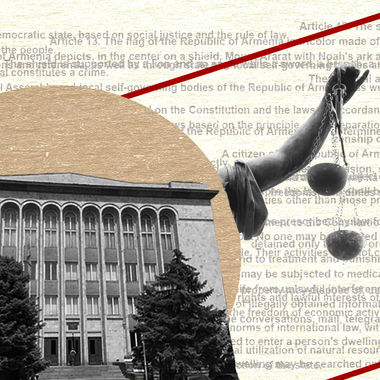


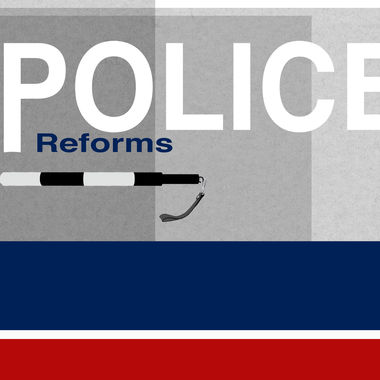
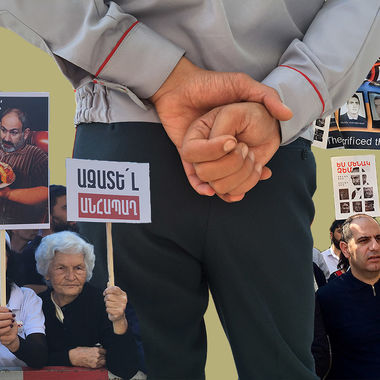
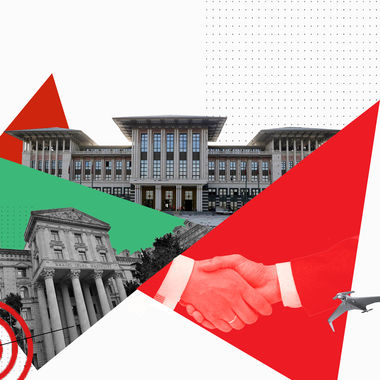
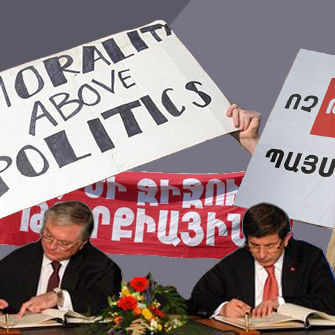


EVN Report welcomes comments that contribute to a healthy discussion and spur an informed debate. All comments will be moderated, thereby any post that includes hate speech, profanity or personal attacks will not be published.